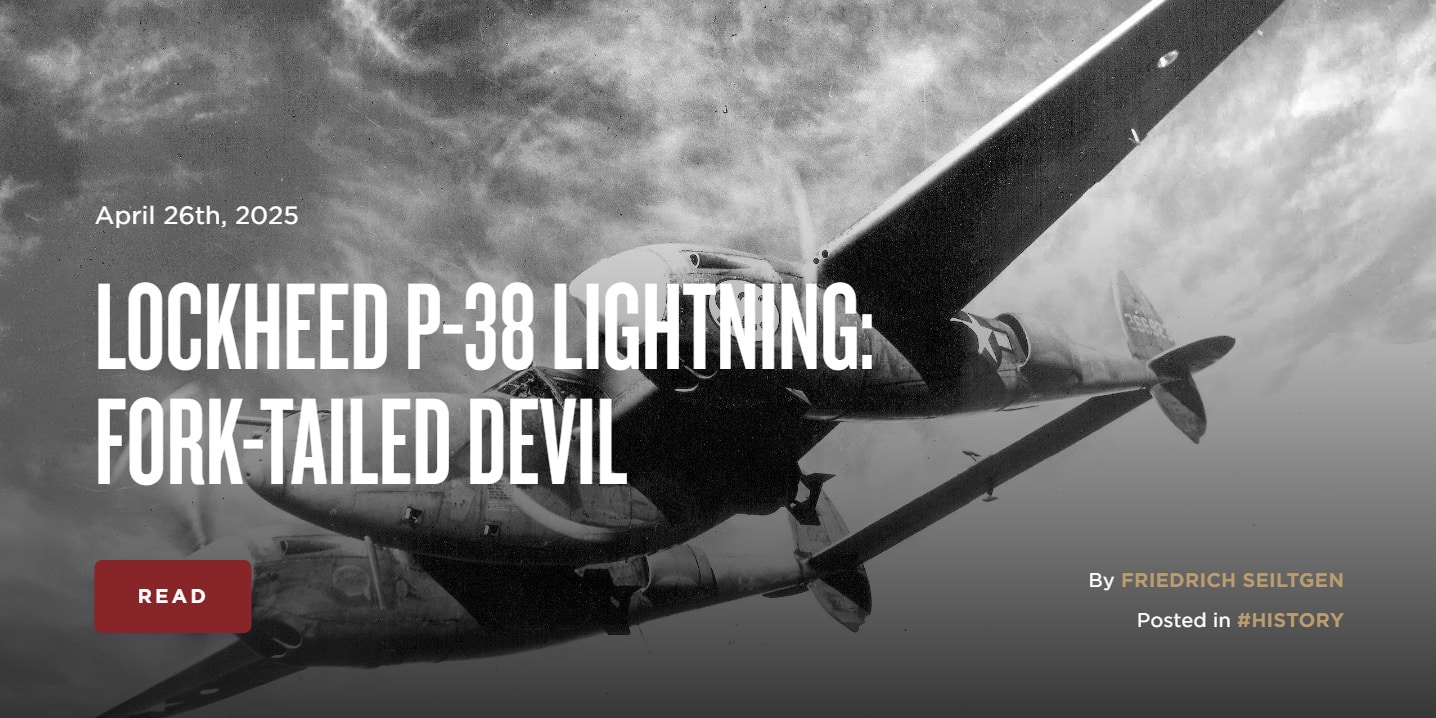Hello all, here is today's article posted on TheArmoryLife.com. It is titled “Lockheed P-38 Lightning: Fork-Tailed Devil” and can be found at https://www.thearmorylife.com/lockheed-p-38-lightning/.



The Smithsonian channel has a documentary about the P-38. The American “Ace of Aces” got 40 kills while flying the P-38 against the Imperial Japanese in the South Pacific.Hello all, here is today's article posted on TheArmoryLife.com. It is titled “Lockheed P-38 Lightning: Fork-Tailed Devil” and can be found at https://www.thearmorylife.com/lockheed-p-38-lightning/.

The pilot I mentioned earlier had that happen during a dogfight. Before that on the same mission he spotted Japanese Zeros so he dropped he external fuel tanks and began engaging the enemy.Decent article.
Note: While the P-38 garnered the majority of attention due to the "compressibility" issue, many of the Tier 1 fighters had issues with compressibility.
Compressibility problems
I'v read that quite a few US fighters ran in to compressibility problems during dives. Except for the Me262 I don't recall if any other German fighters had this problem, or other fighters from differant countries. MaxQww2aircraft.net
More...
Several WWII fighters experienced issues with compressibility, including the P-38 Lightning, P-47 Thunderbolt, F4U Corsair, and Typhoon. These aircraft, designed for high-speed dives and maneuvers, encountered "compressibility" where airflow became turbulent and unpredictable as they approached the speed of sound, leading to control problems and structural damage.
P-38 Lightning: The P-38, while known for its high-altitude performance and climbing capabilities, faced significant compressibility issues in dives. Its high-lift wing design, while good for climb, also made it vulnerable to a loss of control and structural failure at high speeds. To mitigate this, dive flaps were introduced to help slow the aircraft and allow for more controlled dives.
P-47 Thunderbolt: The P-47, a heavy fighter known for its powerful engine and high performance, also encountered compressibility issues, particularly during dives. These issues could lead to control difficulties and even structural damage.
F4U Corsair: The Corsair, a powerful naval fighter, also struggled with compressibility problems, though it was more resilient than some other aircraft.
Hawker Typhoon: The Typhoon, an early British fighter, experienced compressibility issues with its thick wings, which limited its performance at high altitudes and speeds. These issues were addressed in later versions of the Typhoon, such as the Tempest, which featured thinner wings with a laminar flow airfoil.
Other Notable Aircraft:
- Stuka: The Stuka dive bomber, while not a fighter, also experienced compressibility issues due to its high dive speeds, as noted by one forum thread.
- Mustang: The Mustang, while generally a very capable aircraft, also encountered compressibility issues, see above link.
This chart is biased aginst the P-38 since it also had 165 gal. and 300 gal drop tanks so it could fly as far as the furthest P-51 radius on the chart & beyond that.Drop tanks were actually a contentious issue especially with the bomber mafia. The P-38 could fly to Berlin yet the bomber mafia remained adamant that bombers could fly unescorted on long range missions. And bomber crews paid the price for their stubborness. Meanwhile, the 5th AF in the Pacific had P-38s flying long range escort missions from the get go. The video will make your blood boil.
